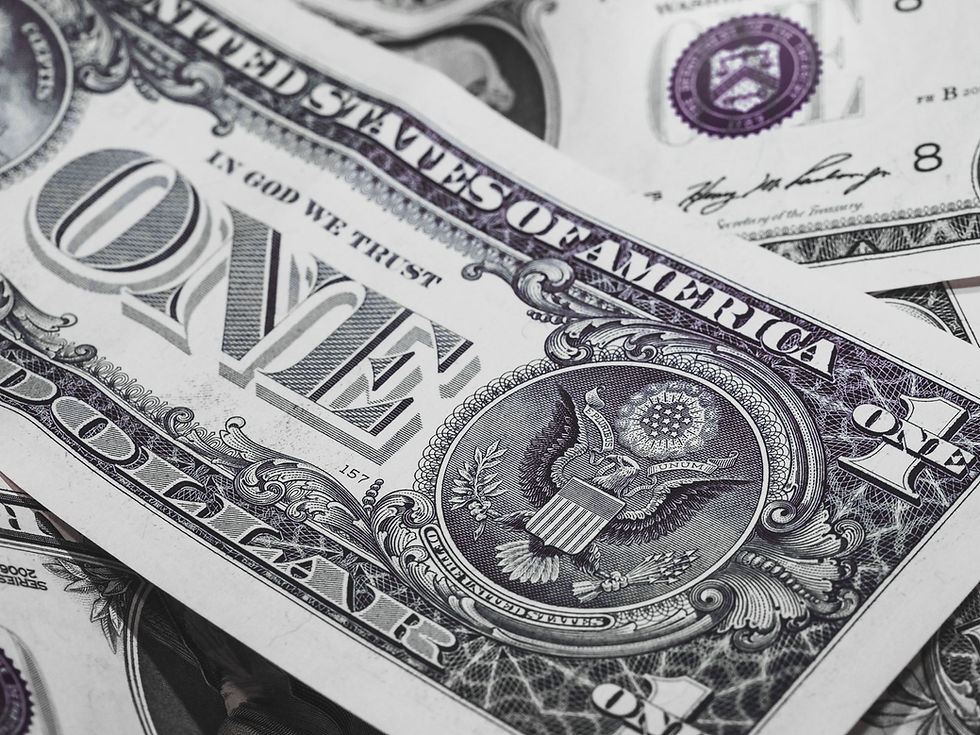More Inflation
- Steve Coker, CFP

- Jul 16, 2021
- 3 min read

In May I emphasized that inflation was on the move, and that inflation will become more and more important to investors in the months ahead. During March the PCED Inflation rate, the Fed’s preferred measure of inflation, rose to 2.4%. In May when we first raised the issue, inflation had moved to 3.9%. Just this week we learned that year over year June CPI moved even higher to 5.4%. The Federal Reserve officials continue to interpret the inflation numbers as temporary. They reason that the 2021 prices are being compared to unusually low 2020 prices. However, this rationale is becoming harder and harder to believe. Here are some thoughts on what is happening to prices in the U.S.
Let us begin with why inflation matters. Of course, inflation matters to us as consumers since we pay more for goods and services. But inflation is important to investors because it drives Federal Reserve policy. The Federal Reserve is tasked with a dual mandate: 1) stable prices and 2) full employment. Often, these two goals are in conflict since stimulative policies designed to increase employment can also overstimulate the economy and lead to inflation. Conversely, policies designed slow the rate of economic growth to fight inflation can overshoot and lead to recessions and fewer jobs. The Federal Reserve has a few tools, most significantly interest rate policy, to either stimulate or slow the economy. Low interest rates stimulate the economy by encouraging borrowing and spending and tend to lead to rising inflation. Higher interest rates discourage borrowing and spending, slow the economy, and tend to bring inflation down. This all matters to investors since Federal Reserve policy is important to future economic growth, corporate profits, and stock prices. If you would like an excellent overview of this process, please see How the Economic Machine Works: https://www.youtube.com/watch?v=PHe0bXAIuk0
As inflation continues to rise, coming in higher-than-expected month after month, the Federal Reserve is under increasing pressure to raise rates. It is tough to believe that all of the price increases are due to unusually low 2020 comparison points. For example, just in the last 3 months new vehicles are up 16.5%, food 6.4%, apparel 9%, and household furniture and bedding 19.2%. These price increases are not due to 2020 comparisons, they are due to rapidly increasing prices during 2021. Also during June the survey of small business owners showed that 47% of business owners are raising their average selling prices, the highest reading since 1981 which was the tail end of the 1970’s era inflation levels.
Arguably, by historical standards the Federal Reserve would have already raised rates to slow inflation, but Federal Reserve Chairman Powell continues to believe that inflation is temporary and remains concerned about stubbornly high unemployment numbers. The Federal Reserve has indicated that they intend to keep rates lower for longer, but for how long? Several Fed members have expressed concern about runaway housing prices, noting that this could be a point of instability in the market. It is likely that higher rates are coming soon, and that does represent a potential risk to investors.
If the Federal Reserve starts tapering their bond purchases, allowing interest rates to float upward, the economic boom that we have seen over the past 12 months will begin to slow and stock price increases will be much more muted.





Comments